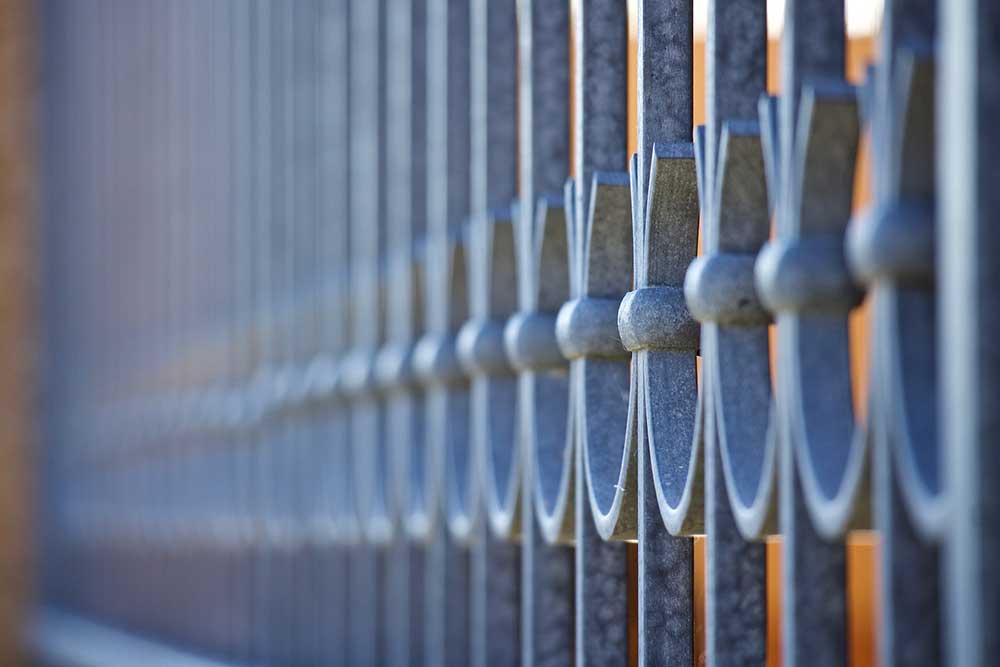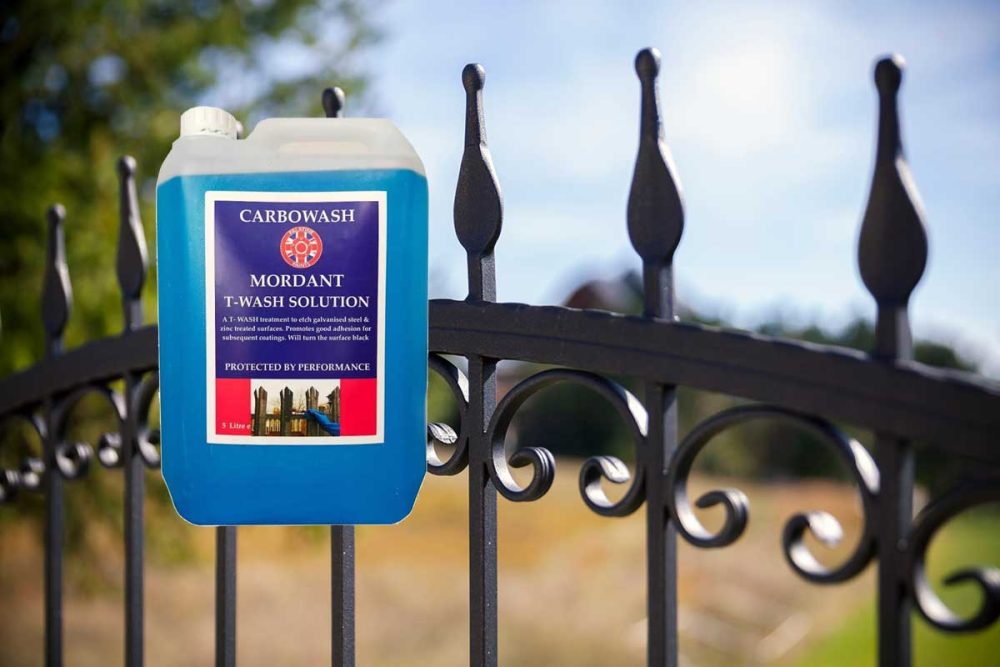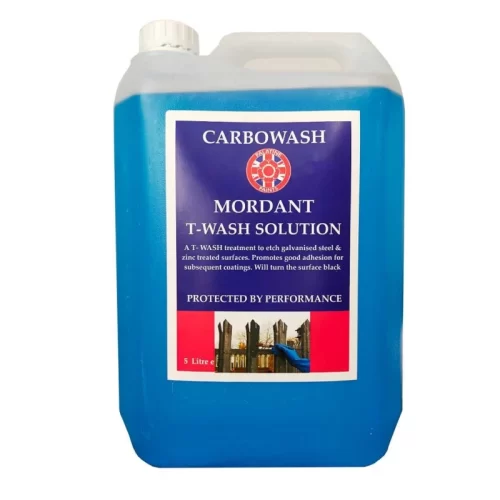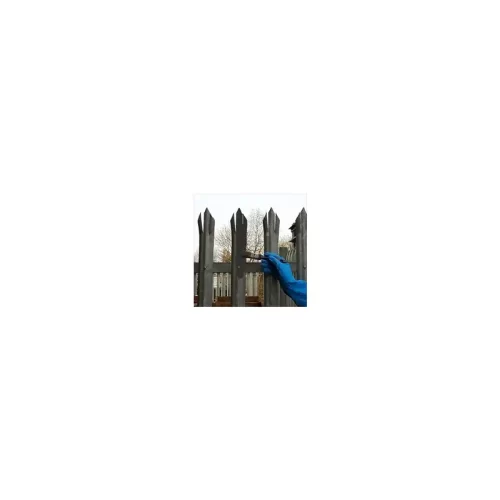All Blogs
Mordant Solution T Wash a pre-treatment for galvanised surfaces
When it comes to metal fabrication, one of the most common types of surface finishes is galvanisation. It’s a technique that involves applying zinc to a metal surface using electrolytic oxidation, which creates a layer of zinc carbonate or zinc sulphide. This layer of zinc protects from corrosion and gives the metal a natural protective finish. Galvanised surfaces are commonly used on structural steelwork, columns, beams, and other structural elements of industrial buildings.
However, for projects that require high-quality visual aesthetics or need to be insulated with bituminous coatings after fabrication; standard galvanised surfaces may not always be ideal. That’s why some fabricators choose to pre-treat their surfaces before galvanising them; this way they have more control over the final look and can achieve the aesthetic they want while still maintaining the corrosion resistance provided by galvanisation.
What is a mordant?
A mordant is a chemical solution that can be applied to a surface in order to increase the adhesion of metallic coatings such as galvanizing, paint, or even bitumen. Typically, a mordant is applied before a surface coating is applied in order to increase adhesion and avoid any peeling or flaking, which can happen if the coating’s adhesive properties aren’t strong enough.
A mordant solution typically consists of a mixture of acid, water, hydrochloric acid and a metallic salt.
This metallic salt serves as a sacrificial metal that’s used to corrode and strengthen the metal substrate being coated. The corrosion caused by the metallic salt can be stopped by adding more acid to the mordant solution, which acts as a stop-loss agent.
Why use a mordant solution?
When fabricators choose to pre-treat their metal surfaces, they have more control over the outcome and can achieve the desired aesthetic. There are several reasons why you might want to consider pre-treating metal, including a need for visual aesthetics, a need for more protection, or a combination of both! If you’re fabricating steel that’s meant to be exposed, you’ll probably want it to be visually appealing.
The metal can be aesthetically enhanced by applying a coating, such as paint or bitumen, to the surface. If you’re fabricating steel that’s meant to be insulated, pre-treating can increase the surface protection and give it an appropriate surface finish before applying the insulation.
Likewise, if you’re fabricating steel that has to be corrosion resistant, pre-treating the surface can provide an appropriate surface finish and increase the surface protection. For example, if you’re fabricating a structural steel beam, you may want to pre-treat it with a zinc coating before galvanising it. Doing so will allow you to achieve a visual aesthetic by applying paint to the surface, while also providing resistance against corrosion.
Not sure which whether to use mordant solution or etching primer? Take a look at our blog which helps explain in more detail to help you: https://www.palatinepaints.co.uk/which-metal-primer-to-use-and-when/
How to use our Mordant T wash solution
Surfaces must be clean, dry, and free of all oily substances, dirt, grease, wax, etc. Prior to application, the surface must be degreased with an oil and grease remover.
After washing the surface with clean water to remove any residues, apply a generous amount of our Palatine Mordant T Wash Solution and allow it to dry. If the surface fails to turn black overall, the most likely cause is contamination of the surface or the presence of a factory-applied pretreatment. After rinsing, use an abrasive paper to abrade the surface. Remove all residues and reapply Palatine Mordant Solution. Pooling may result in a fine brown deposit of copper if the surface is not rinsed thoroughly and allowed to dry before priming. To ensure that all residues have been removed, rinsing is mandatory after the surface has been treated.
We recommend our Anti-corrosive metal primer which is used over the pre-treated metal within 24/48 hours as contamination can occur, then finish the metal with a top coat.

What’s the difference between mild steel and galvanised steel?
In short, a mild steel surface is not protected from rusting, while a galvanised steel surface is. Mild steel is an uncoated iron alloy that’s meant to be used for structural steel fabrication, like columns and beams. It’s an inexpensive and versatile option for fabricators who don’t require their steel to be corrosion-resistant. Galvanised steel, on the other hand, is iron that’s coated with zinc to protect from corrosion. It’s a good option for fabricators who want to protect the structural steel from rusting, but don’t need it to be structural (i.e. using it as a decorative beam or column rather than one that supports weight loads).
Types of mordants and their uses
An alkaline solution – Also known as water-pickling, this mordant uses an alkaline solution (sodium hydroxide) to corrode the metal surface. It’s commonly used for mild steel and galvanised steel.
This type of mordant is less aggressive than acid-based mordants, so it won’t leave a residue on the metal surface. Although it doesn’t provide as much adhesion as an acid-based mordant, it’s still effective for securing a coating against the metal surface. An acid-based solution – This mordant uses an acid solution for the pickling process. It’s commonly used for galvanised steel and is more aggressive than alkaline-based mordants, so it leaves a residue on the surface.
Conclusion
Pre-treating metal surfaces is a good way to achieve a desired aesthetic while still maintaining the corrosion resistance provided by galvanisation.
There are several reasons why you might want to consider pre-treating metal, including a need for visual aesthetics, a need for more protection, or a combination of both. An alkaline-based mordant uses an alkaline solution (sodium hydroxide) to corrode the metal surface and is typically used for mild steel and galvanised steel.
An acid-based solution uses an acid solution for the pickling process and is commonly used for galvanised steel.
Palatine Paints have been manufacturing paints for over 75 years and have a dedicated technical and sales team to answer any questions you may have, about any number of our product ranges.
If you have any questions on the products we’ve listed here, our dedicated sales and/or technical team are here to help.
Email: [email protected]
Call Us: 01942 884 122






